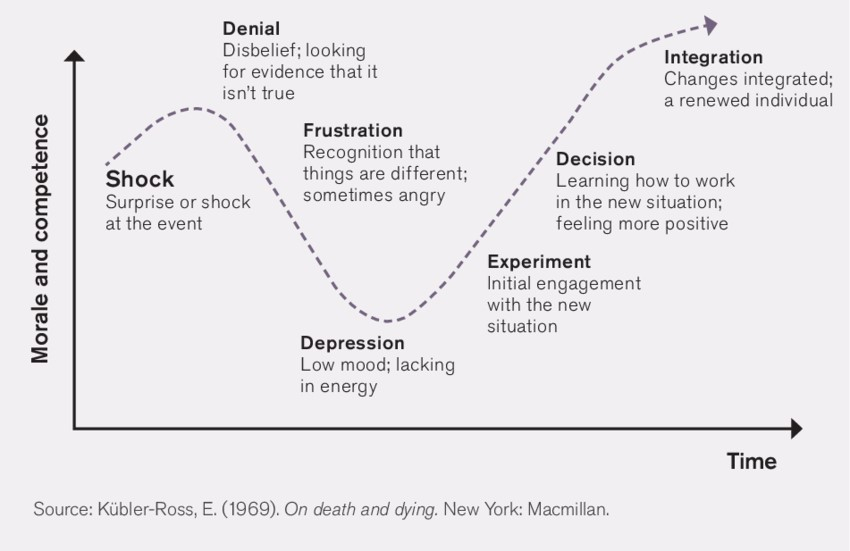Are you ready for CHANGE?
The accounting profession is at one of those key points in time where change is inevitable. With the new International Standards on Quality Management (ISQM) coming into effect on the 15th of December 2022, we are less than 5 months away from its effective date. The question is: ARE YOU READY?
Being prepared and ticking the boxes is one thing, but how do you ensure that the anticipated change you seek is successful? How do you make ANY change possible? The answer: Change management.
Change management is defined by TechTarget as a systematic approach to dealing with the transition or transformation of an organisation goals, processes or technology. The purpose of change management is to implement strategies for effecting change, controlling change and helping people to adapt to change.
There are a lot of literature on change management available on the internet; with a simple Google search you can find almost anything on the topic. From the “7 R’s of change management” to “5 steps to successfully change”. But, how do you make it practical in your organisation?
In general people’s initial reaction to any change is shock, even denial, refusing to accept the change. This is where it is important to get the people who will be affected by the change involved as early as possible; moving them through the change curve which talks to people’s emotions when experiencing change. The change curve can be visually represented as:
Change happens at three levels: change within an individual, the individual’s team and in the organisation as a whole. In all organisations there are “early adopters”, those that “wait-and-see” and “resisters”. Implementing a change management strategy / plan is a collaborative effort where those who are implementing the change needs to develop a strategy specific to move the majority “wait-and-see” individuals to adopt the change. Not only do the strategy need to talk to those that “wait-and-see” but also the “resisters”, as they are key to the success of the desired change. If the “resisters” are not “moved” the majority “wait-and-see” could just join them, resulting in a failed project.
Certainly the question that comes to mind is what the key elements for success are when it comes to change management. One of the models many organisations turn to is: The Prosci ADKAR® Model. This is a results-oriented approach to manage change based on a simple truth: company-wide change happens one person at a time.
The acronym ADKAR® stands for:
A – Awareness: creating awareness about the change
D – Desire: this talks to why the change is needed and probably the question many ask what is in it for them? Why do I need to make the change?
K – Knowledge sharing: training individuals on the change that happened or is about to take place to equip them with the required knowledge to perform optimally. Making resources available on the desired change.
A – Ability: this makes the change practical, how the individual’s work will be impacted and what is expected from them.
R – Re-enforcement: often missed, this is what happens after “Go Live”. How an individual is supported, follow-up training, refreshers, what happens with exceptions and how questions are dealt with?
Throughout the ADKAR® model the 5W’s needs to be answered to ensure that the model is effective and addressed at all levels: People, Processes and Technology. Here are some to of the questions that could be asked:
- Why is the change needed?
- What is actually changing? What is the impact of the change on an individual’s day-to-day life? What is the consequence if we don’t change?
- Who will be impacted?
- Where can I get information or support?
- When should this be implemented (by what date)?
Working through the ADKAR® model and answering the 5W’s is not enough, you need to go further. Linking it to ISQM, it is important that leadership is aligned with the change. ISQM 1 clearly states that leadership is responsible and accountable for quality, setting the tone at the top. Through their actions and behaviour, leadership demonstrates their commitment to quality; moving from quality control to quality management, making the required shift (change).
Through change management we recognise that an organisation’s most important resource is its people; getting the people’s buy-in is key to the success of change. This is also where leadership plays a fundamental role, they set the example from the start. They should walk the talk.
An overarching principle is effective communication. Communication is fundamental to the success of any project. Insufficient communication can lead to misunderstanding, missed opportunities, regression, aggression and even frustration.
Developing and implementing a change plan is crucial to ensure that everyone stays on track and that everything gets done. This is where project management plays a roll to ensure everyone delivers what they are required to, by a specific date. This ensures that everyone works together towards a common goal and stay on track. Fail to plan you plan to fail.
Then after implementation it is essential to evaluate if everything that the organisation or leadership has set to out to achieve has indeed been achieved. The process doesn’t stop after implementation. This is when re-enforcement is fundamental, as this imbeds the change resulting it in becoming the new normal.
The accounting profession can certainly take a page from other organisations with internal change management specialists. Something they do well is celebrating successes along the way and at the end. Celebrating successes allows the organisation to take its staff along on the journey, making them part of the organisation’s success.
Perhaps you are still sceptic on the relevance and importance of effective change management. The below table shows research conducted by a company Prosci on what happens when there is change management:
Source: Accountancy SA
It is not too late to build in elements of change management as we embark on the final stretch in preparation for ISQM.
Author
Jeanne Viljoen, Senior Manager
30/09/2022


